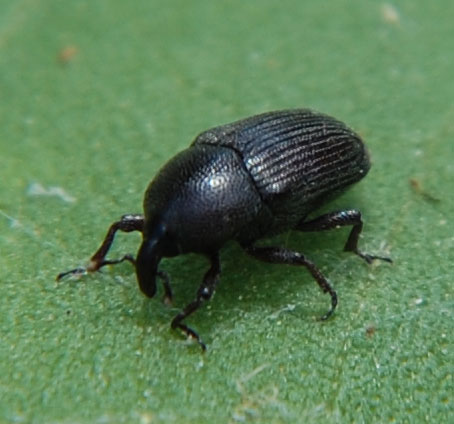Cocklebur Weevil
Baris sp.

Several of these shiny black weevils were found chewing fresh foliage of Cocklebur (Xanthium strumarium) along French Creek in the southern foothills of the Bradshaw Mts., Yavapai Co., Arizona, May 2009. Identified by v. belov. The length is a bit less than 5 mm.
Curculionidae -- Weevil Family
Beetles are the most diverse order of insects and the weevils are the most diverse family of beetles. Hardly a plant in the Sonoran Desert exists that does not have a weevil of some species that has come to more-or-less specialize in consuming it. Whether this weevil is actually a specialized herbivore of cocklebur is unknown. Further evidence, such as egg-laying or a larva developing within the roots, stem or fruit might clarify the relationship. Baris interstitialis may be the same species and it has been considered as a biological control for the often weedy, cocklebur. Other Baris spp. tunnel into root systems.
Most weevils are characterized by a pronounced snout forming the anterior of the head and bearing the mouthparts. With this snout the female weevil prepares a chamber within the food plant tissue where her eggs will be deposited. Once the egg is thus implanted deep within she covers over the hole with chewed material and a saliva-glue. Now when the egg hatches the emerging grub finds itself protected from the elements and surrounded by its food.